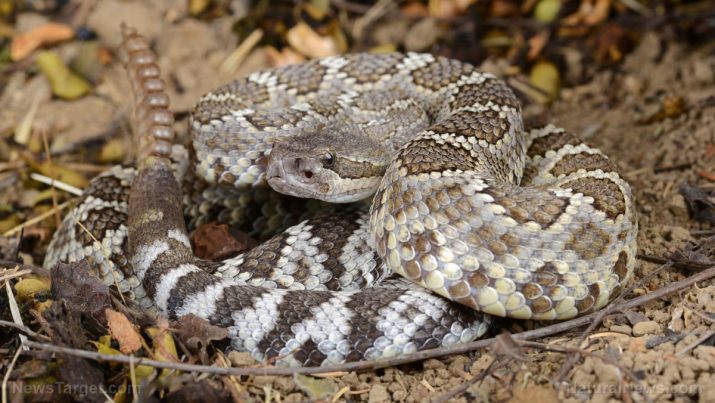Surviving a snake bite: What you need to know, how to prepare
Saturday, July 14, 2018 by Rhonda Johansson
http://www.bugout.news/2018-07-14-surviving-a-snake-bite-what-you-need-to-know-how-to-prepare.html

Most of us don’t consider snakes in our survival preparations. We talk about the uses of herbs in medicine and how to build a shelter from materials found in nature, but an essential part of prepping is understanding the kinds and appropriate first aid responses for different dangerous animals. In this edition of medical preparedness, we will brief you through snakebite survival.
The first thing to determine is if the snake in front of you is venomous or non-venomous. In general, venomous snakes such as rattlesnakes, copperheads, and cottonmouths, have triangular heads and elliptical pupils. This is why they are called “pit vipers” — most venomous snakes have a pit between and slightly below the eye and nostril. Non-venomous snakes, on the other hand, typically have round pupils and a large smooth cap with no pits. Of the venomous snakes mentioned, the copperhead is the most aggressive and numerous in the United States, particularly in North Carolina.
Non-venomous snakes are incapable of breaking skin if it’s covered. Nevertheless, you must treat all snake bites as potentially life-threatening. Remember that most snake venom works quickly; they either kill you immediately or incapacitate you to some degree so that the snake can swallow you at its leisure.
There are two types of snake bites that may occur. The first is called the dry bite and happens when the snake strikes but no venom is released. Dry bites are painful and will cause swelling and redness around the injured area. You still need to see a medical professional as soon as you can to ensure that you have not been poisoned. The other, more serious, bite is the venomous one. Depending on the snake, venom can stun, numb, or kill you. Symptoms will include swelling, dizziness, blurred vision, headaches, difficulties in breathing, and severe pain around the bite. Copperheads are distinguishable by their hourglass-shaped markings. The hourglass shape is a warning sign; dangerous animals such as the black widow spider and the brown recluse spider give the same characteristic markings. This is why survivalists are told, “hourglass shape, move in haste.”
Knowing basic first aid will slow down the spread of the poison while you make your way to the nearest poison control center. Once you are bitten, keep calm. Stress makes your heart beat faster; this will spread the venom faster. If you can, position the bitten area below the heart level and remove any tight clothing and jewelry. Use a splint or compression bandage to restrict its movement. Remember to keep the bandage tight enough to slow down circulation but not so tight as to damage the affected area. Do not wash or suck the bite. (Related: Homeopathic Remedies Treat Insect Stings and Snake Bites.)
To avoid a snake confrontation, try walking in uncharted areas during cooler times of the day. Snakes are at their most active during hot weather and at night. Avoid entering tall grass or undergrowth. Wear thick boots, long pants, and leather gloves whenever you can. Most snake bites happen as a defense mechanism. If you come across a snake who enters its defensive position (usually coiling up and hissing at you), do not panic. Back away slowly to a safe distance and wait for it to move away. For the most part, snakes will not bite you — you are not its usual prey. It will, however, defend itself if you insist on killing or capturing it.
Lastly, do your research. If you are planning on going to an area known for having a lot of snakes, familiarize yourself with the common kinds of snakes found there.
You can find more medical preparedness articles at Preparedness.news.
Sources include:
Tagged Under: Tags: camping and hiking, medical preparedness, off grid dangers, outdoor living, prepping, snake bite, snake bite first aid, survival

